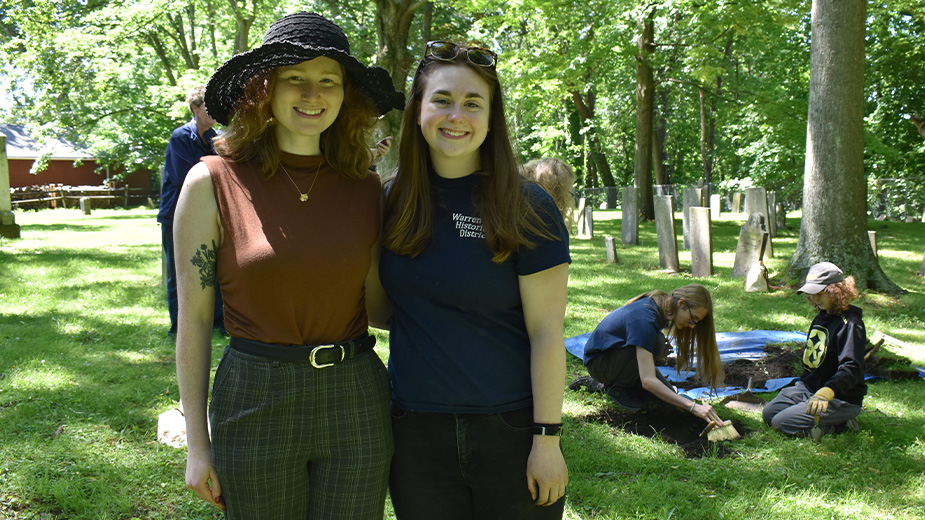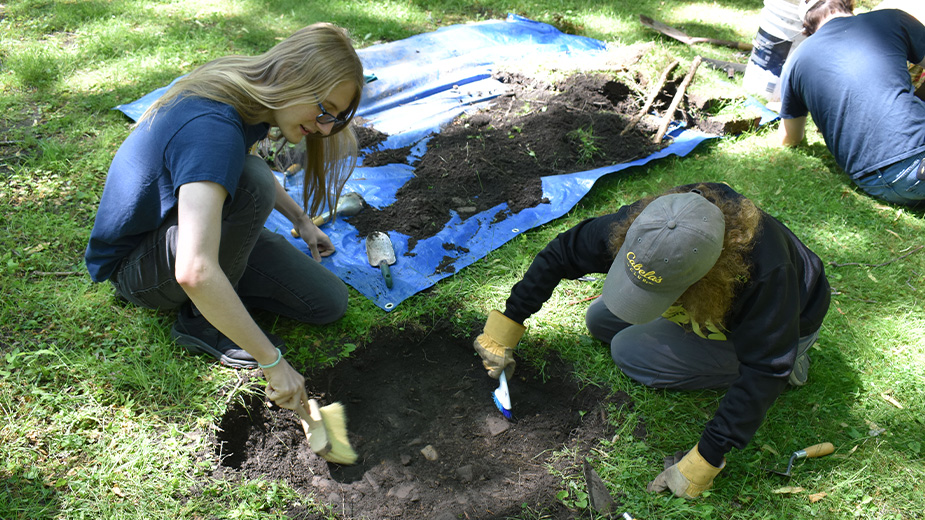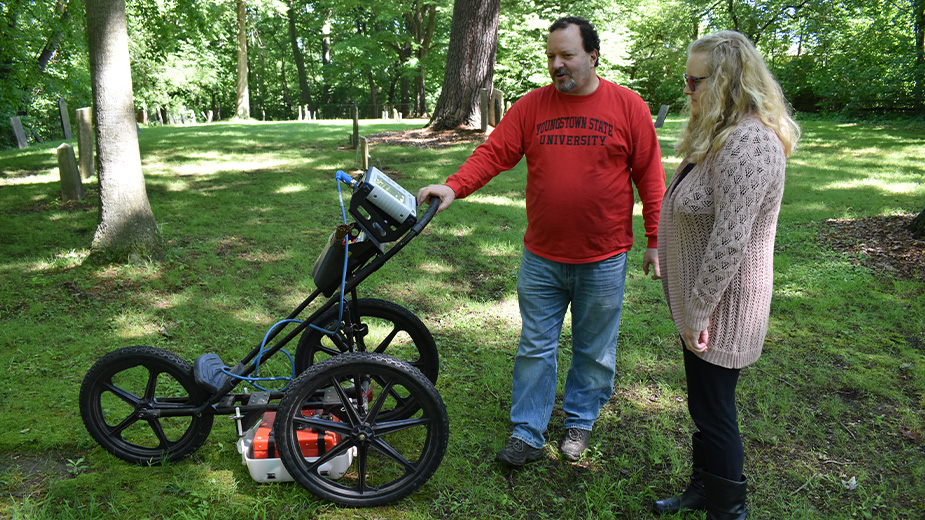Project Aims to Identify Graves at Pioneer Cemetery
WARREN, Ohio – With the help of a Youngstown State University associate anthropology professor and some sophisticated equipment, Trumbull County Historical Society representatives are hopeful they can find unmarked graves at the Old Mahoning – or Pioneer – Cemetery.
Joined by current and former YSU students and TCHS staff and volunteers, Matt O’Mansky, anthropology and sociology program coordinator in YSU’s department of humanities and social sciences, was scanning the 1.5-acre cemetery Thursday using ground-penetrating radar equipment. Such equipment also is used in cold case investigations by law enforcement and in construction to detect underground objects.
“We’re just running lines back and forth across the cemetery. When we get an unusual signal, we’re putting a flag in the ground. And then we have students and volunteers out there digging to see what it is,” he said.
“The cemetery is the final resting place for so many of our earliest settlers in the area, so it’s a very tangible piece of history,” said Savannah Moss, TCHS collections and research manager. Among those interred at the cemetery are notable figures such as John Stark Edwards.
“Sarah Fitch Adgate was the first burial here, and the last we know of was Eunice Woodrow,” Moss said.
Earlier this year, the historical society received a donation of photographs, negatives, floppy discs and documents from the Trumbull County Geological Society’s 2003 survey of the cemetery, according to Kate Pfouts, TCHS archivist. Subsequently, the historical society secured a grant to fund digitizing those records, which enabled it to bring on an intern to assist with that effort.

Last week the historical society hosted a cleanup day during which headstones of a couple of children buried there were uncovered, Pfouts said. She contacted O’Mansky, her former instructor, about conducting a survey of the site using the GPR gear.
How many graves might be found is uncertain, she said. Some reference materials indicate that 100 graves were moved to Oakwood, and a 1980s newspaper article mentioned that some graves might have fallen down the hill into the Mahoning River.
The GPR equipment shoots sound waves and detects the time it takes for the radar to bounce off something and reflect back, determining the detected item’s depth, O’Mansky said. The radar waves also help determine how solid a detected object is. Though the data shows up only as waves and spikes on the display on hand, it can be fed into software that can show the shape of detected objects.
Examination of the cemetery will be “a two-part project,” O’Mansky said. The radar works better with “really dry soils,” unlike the rain-saturated ground Thursday, so the study of the site was a “first pass under less than ideal conditions.” The plan is to return in July or August when the ground is drier to perform a more systematic search, likely walking well over 10 miles.
“Most likely, there are some unmarked burials here that we hope to find,” as well as “headstones to actually give names to people,” he said.

On Thursday, the GPR equipment detected what seemed to be “almost like a bar going across,” Pfouts said.
“Upon digging down, we’re finding kind of a gravel-like layer,” she continued. “It’s not a natural formation.”
Mitchel McTigue of Poland, who received his bachelor’s degree in anthropology from YSU, was among the group assisting with Thursday’s event.
“We’re hoping at least to find some sort of unmarked graves – at least one – whether it be stone deposits or even actual markers,” he said. “Just at the spot we’re at right now, there’s a lot of gravel deposits. That could be something, but we really don’t know until it’s uncovered.”
Pictured at top: Matt O’Mansky, anthropology and sociology program coordinator in YSU’s department of humanities and social sciences, and India Gatts, an intern with the Trumbull County Historical Society.
Copyright 2024 The Business Journal, Youngstown, Ohio.



